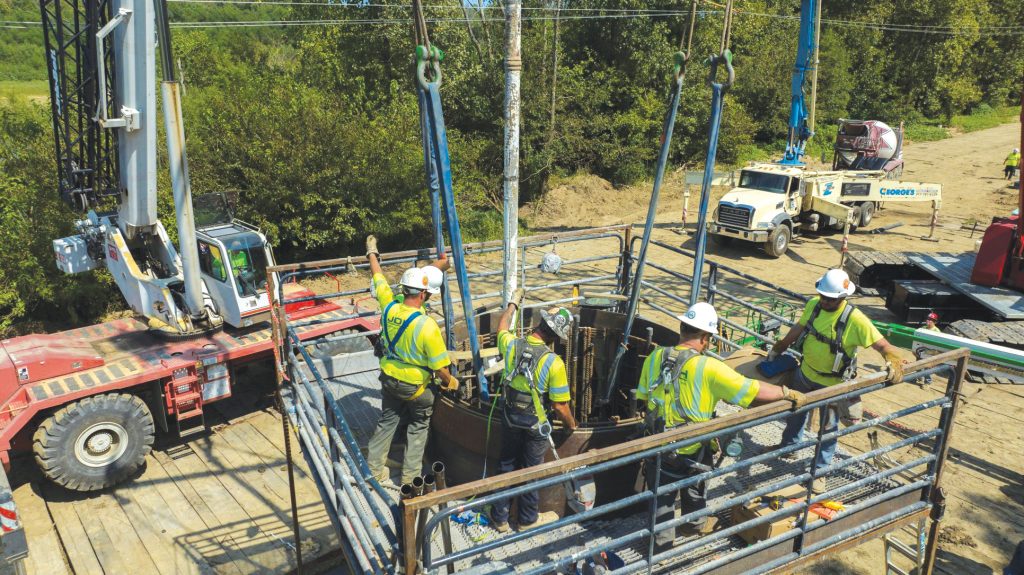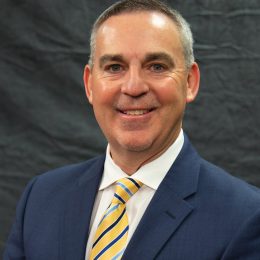
Through a complex, dual-stage project, Hoosier Energy is working diligently to upgrade grid technology and infrastructure.
Straddling the White River in Greene County, just southwest of Bloomfield, is a three-quarter mile stretch of Hoosier Energy power lines in the territory of the Utilities District of Western Indiana (UDWI) REMC.
Those lines were strategically placed out of harm’s way some five decades or so ago. But, erosion, river migration and the watchful eyes of Hoosier Energy employees such as Working Foreman Phil Gardner, in keeping with one of Hoosier Energy’s strategic priorities — Grid Technology and Infrastructure — made replacing the poles for those lines a priority for the company.
The two-part Bloomfield River Washout Project wrapped “phase I” earlier this fall by installing seven steel casings, each eight feet wide and a half-inch thick, ranging from 70 to 95 feet in length. Inside each of those casings was placed a steel rebar cage, ranging from 14,000 to 46,000 pounds, and held in place by approximately 130 yards of concrete — in other words, nearly 15 cement trucks worth. Top it off with an anchor-bolt cage that the 80-foot pole will attach to, and you’ve got more than Paul Bunyan himself could do by hand — hence the need for a 300-ton crawler crane with a 130-foot mast.
Getting all of that equipment where it needed to go made for a unique task.
“Every project has its own nuances that make it unique, and there are others which rival this one in scale and complexity,” Hoosier Energy Vice President of Technical Services Will Kaufman said, “but what makes this one unique is gaining access to the site.
“You’re in the rolling hills near the river bottoms and you need to take a 300-ton crane a mile off-road. This may be one of the more challenging access projects we have undertaken.”
It is also one of the biggest, and it started with Vegetation Management Coordinator Jared Murphy helping to create a working path.
After a path was hewn, preparation needed to be made in case the river overflowed its banks or bad weather set in. The solution was 3,000 log mats, and each piece of hardwood was four feet wide, 16 feet long and eight inches thick — all delivered to the site by the semi-truckload. In addition, a helipad was built in case of emergency.
Over the course of 10 weeks, all seven foundations — five on the west side of the river and two on the east side — were installed.
Now, all that’s left to do is wait for “phase II” to begin next summer.
“We let the concrete cure, get our parts, and next year come in with some dry weather and knock all the lines out with new conductors and nice, new, shiny metal poles set up,” Hoosier Energy Senior Project Manager Kyle Eslinger said.



